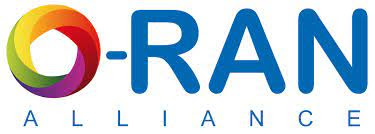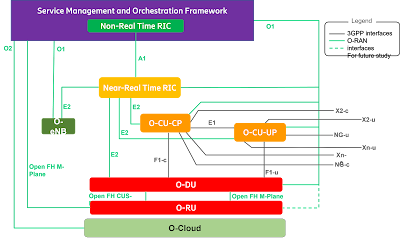Nokia and AT&T's Open RAN Trial Demonstrates Success for 5G Use Case
In a press release today, Nokia has confirmed a successful trial of RAN Intelligent Controller (RIC) xApps with the native E2 interface. Nokia's commercial near real-time RIC platform was used for the trial, which ran on Nokia AirScale base stations deployed on AT&T's network. The platform hosts Artificial Intelligence (AI) and Machine Learning (ML) capabilities to enable RAN programmability through the use of near real-time xApps.
The trial's success is a great news as Telecom Industry is moving towards O-RAN compliance. In this trial Nokia and AT&T leveraged advanced intelligence of the Open RAN compliant near real-time RAN Intelligent Controller. Nokia is the first major RAN vendor which supports the Open RAN compliant near real-time RIC and the E2 interface for running xApps natively. The successful trial by Nokia and AT&T validated the potential of using the near real-time RIC and xApp approach for advanced 5G use cases.
In the trial, targeted RAN optimization was done by near real-time RIC utilizing the E2SM policy services. The advantage of the near real-time RIC is its ability to optimize services for specific user groups, different frequency layers, and Quality of Service (QoS) Class Identifiers in 5G networks. Additionally, Nokia's near real-time RIC platform and xApps have the capability to utilize existing interfaces for RAN optimization use cases that are compatible with operator networks.
Nokia has developed Advanced Traffic Steering xApp, which distributes mobile traffic across various frequency layers to allocate more bandwidth for mobile users, and the Anomaly Detection xApp, which uses machine learning to quickly identify and categorize abnormal behavior patterns in the RAN, to show the capabilities of near real-time RIC. These are some of the examples of advanced 5G use cases of near real-time RIC which leverage AI/ML-based optimization algorithms to dynamically enhance RAN performance.
AT&T is very positive on near real-time RIC for 5G use cases and Nokia's Service Enablement Platform, as significant progress is made through multiple trials in the last few years. You can read the complete press release by Nokia here.
ORAN (Open Radio Access Network) is an open standard for radio access networks (RAN) that aims to provide more flexibility, innovation, and competition in the RAN market. It is a network architecture that separates the RAN into different components that can be developed and supplied by multiple vendors, rather than being closed and proprietary to a single vendor. The ultimate goal of ORAN is to enable operators to build and operate RAN infrastructure that is more cost-effective, scalable, and agile.
Near real-time RIC (RAN Intelligent Controller) is an important component of the ORAN architecture. It is a software platform that provides real-time intelligence and control over the RAN, enabling network operators to optimize network performance and quality of service (QoS) for end-users. The near real-time RIC can dynamically configure and orchestrate network functions, and it can provide closed-loop automation and optimization based on network conditions and user demand.
It also supports the development and deployment of xApps (extensible applications) that can leverage AI/ML-based algorithms to provide advanced network services and use cases. The near real-time RIC is compliant with the oRAN standard and can be integrated with different RAN vendors' products, providing a more open and interoperable network environment.












No comments: